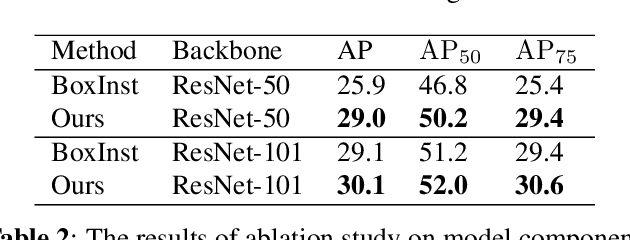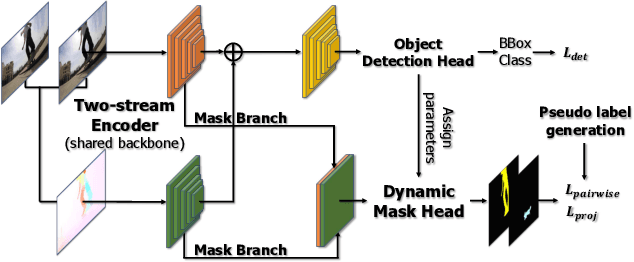Jun Ikeda
Weakly Supervised Instance Segmentation using Motion Information via Optical Flow
Feb 25, 2022



Abstract:Weakly supervised instance segmentation has gained popularity because it reduces high annotation cost of pixel-level masks required for model training. Recent approaches for weakly supervised instance segmentation detect and segment objects using appearance information obtained from a static image. However, it poses the challenge of identifying objects with a non-discriminatory appearance. In this study, we address this problem by using motion information from image sequences. We propose a two-stream encoder that leverages appearance and motion features extracted from images and optical flows. Additionally, we propose a novel pairwise loss that considers both appearance and motion information to supervise segmentation. We conducted extensive evaluations on the YouTube-VIS 2019 benchmark dataset. Our results demonstrate that the proposed method improves the Average Precision of the state-of-the-art method by 3.1.
Predicting Online Video Advertising Effects with Multimodal Deep Learning
Dec 22, 2020



Abstract:With expansion of the video advertising market, research to predict the effects of video advertising is getting more attention. Although effect prediction of image advertising has been explored a lot, prediction for video advertising is still challenging with seldom research. In this research, we propose a method for predicting the click through rate (CTR) of video advertisements and analyzing the factors that determine the CTR. In this paper, we demonstrate an optimized framework for accurately predicting the effects by taking advantage of the multimodal nature of online video advertisements including video, text, and metadata features. In particular, the two types of metadata, i.e., categorical and continuous, are properly separated and normalized. To avoid overfitting, which is crucial in our task because the training data are not very rich, additional regularization layers are inserted. Experimental results show that our approach can achieve a correlation coefficient as high as 0.695, which is a significant improvement from the baseline (0.487).
 Add to Chrome
Add to Chrome Add to Firefox
Add to Firefox Add to Edge
Add to Edge